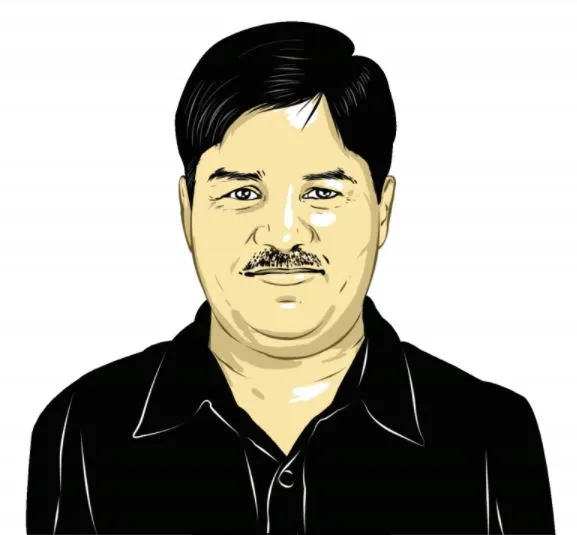Opinion Question of caste in free India: 1951 Census to now
The Mandal Commission’s report was submitted after Indira Gandhi stormed back to power in 1980. Its report, which too suggested a caste census, was implemented in parts in 1994 and then in 2009. Its suggestion on the caste census is finally expected to take place now.
 President Rajendra Prasad taking part in the 1951 Census. (Credit: Census India)
President Rajendra Prasad taking part in the 1951 Census. (Credit: Census India) On April 30 this year, the Cabinet Committee on Political Affairs (CCPA) approved caste enumeration in the forthcoming census. While India last collected caste data during the 1931 and 1941 Census, the latest available data is that of 1931 since the 1941 survey was not released. Similar data was collected during the 2011 Census too — but as a part of a special Socio Economic Caste Census (SECC) to identify households living below poverty line (BPL) as well as caste so that they could get various entitlements. Despite costing nearly Rs 5,000 crore, this countrywide report was never released.
In a meeting of Census officials in February 1950, Deputy Prime Minister Sardar Vallabhbhai Patel, who also held the Home Affairs portfolio in the interim government headed by Pandit Jawaharlal Nehru, had announced categorically, “Formerly, there used to be elaborate caste tables which were required in India, partly, to satisfy the theory that it was a caste-ridden country and, partly, to meet the needs of administrative measures dependent upon caste division. In the forthcoming Census, this will no longer be a prominent feature.”
Hence, the 14 questions in the 1951 Census sought information on “nationality, religion and special groups”, among other information.
However, the omission of caste in enumeration and tabulation would prove to be a huge loss for sociologists and anthropologists. As soon as the 1951 Census was completed, the government in January 1953 decided to constitute a commission headed by then Rajya Sabha MP, social reformer and journalist Dattatreya Balkrishna Kalelkar, popularly called Kaka Kalelkar, to look after the demand for reservation and other affirmative actions for the other backward classes (OBCs).
On March 18, 1953, then President Rajendra Prasad formally inaugurated the Kalelkar Commission. Speaking on the occasion, both President Prasad and Prime Minister Nehru expressed the hope that the “labours” of the commission would pave the way for a “classless” society in India. Nehru, who disliked the term “backward classes”, even remarked that it was wrong to label any section as backward, even if they were so, particularly, when 90% of the people in the country were poor and backward.
As the head of the First OBC Commission, Kalelkar’s biggest hurdle was the “lacunae” of caste data, especially of those who claimed to be OBCs. The Registrar General, meanwhile, provided the Commission with separate reports on the “estimated” population of certain OBC castes for different states.
According to the Registrar General’s estimates, nearly 11.5 crore Indians belonged to 930 backward castes. A report by the Kalelkar Commission noted that it had prepared a list of 2,399 castes as backward (Total population of the country in 1951 was 36.10 crore).
Stating that the Registrar General’s estimates had made its task “extremely difficult”, the Kalelkar Commission noted, “The Census Department has furnished us with approximate population figures for most of the communities, but we assume no responsibility for the reliability or finality of these figures.”
The Commission also got estimates from individual communities. However, the Commission added, “Figures furnished by the various communities were chiefly a matter of guesswork and their numbers were often exaggerated…. The caste-wise statistics in the previous Census reports (of 1941) were not compiled on a uniform basis throughout India and were, therefore, not of much use…We cannot consider this method of compilation either satisfactory or reliable, but we had to utilize whatever materials were made available to us.”
Advising that the next Census should “give all the necessary information about castes and sub castes”, the Kalelkar Commission said, “We would like to record here that the Census of 1961 should collect and tabulate all the essential figures caste-wise. We are also of the opinion that if it is possible, this should be carried out in 1957 instead of in 1961, in view of the importance of the problems affecting backward classes.”
Propagating for the caste census, the panel suggested, “It would certainly be valuable material for sociologists and anthropologists… But a lurking suspicion is asserting itself in my mind: Can we do it?”
Though the report of the First OBC Commission, submitted in 1955, was never implemented, its suspicions would prove to be true. There was no caste census till 2011, which was just an SECC exercise and not a part of the 2011 Census. Kalelkar remained in the Rajya Sabha till 1964. Nehru, who constituted the Commission, passed away in May 1964. Till the end, his government was unclear on the final criteria for backwardness — caste or economics.
Replying to a question in the Lok Sabha on April 17, 1963, on the criteria, Maragatham Chandrasekar, then Deputy Minister of Home Affairs, had said, “All that we are doing now is to suggest to the State Governments that they should adopt the economic criterion instead of the caste criteria.”
By 1977, the demand to implement the Kalelkar Commission report had gathered steam. The Morarji Desai government then constituted the Second OBC Commission, headed by Bindheshwari Prasad Mandal, the scion of the erstwhile Murho Estate in Bihar who also served as the seventh chief minister of the state.
The Mandal Commission’s report was submitted after Indira Gandhi stormed back to power in 1980. Its report, which too suggested a caste census, was implemented in parts in 1994 and then in 2009. Its suggestion on the caste census is finally expected to take place now.
The writer is Senior Associate Editor, The Indian Express





